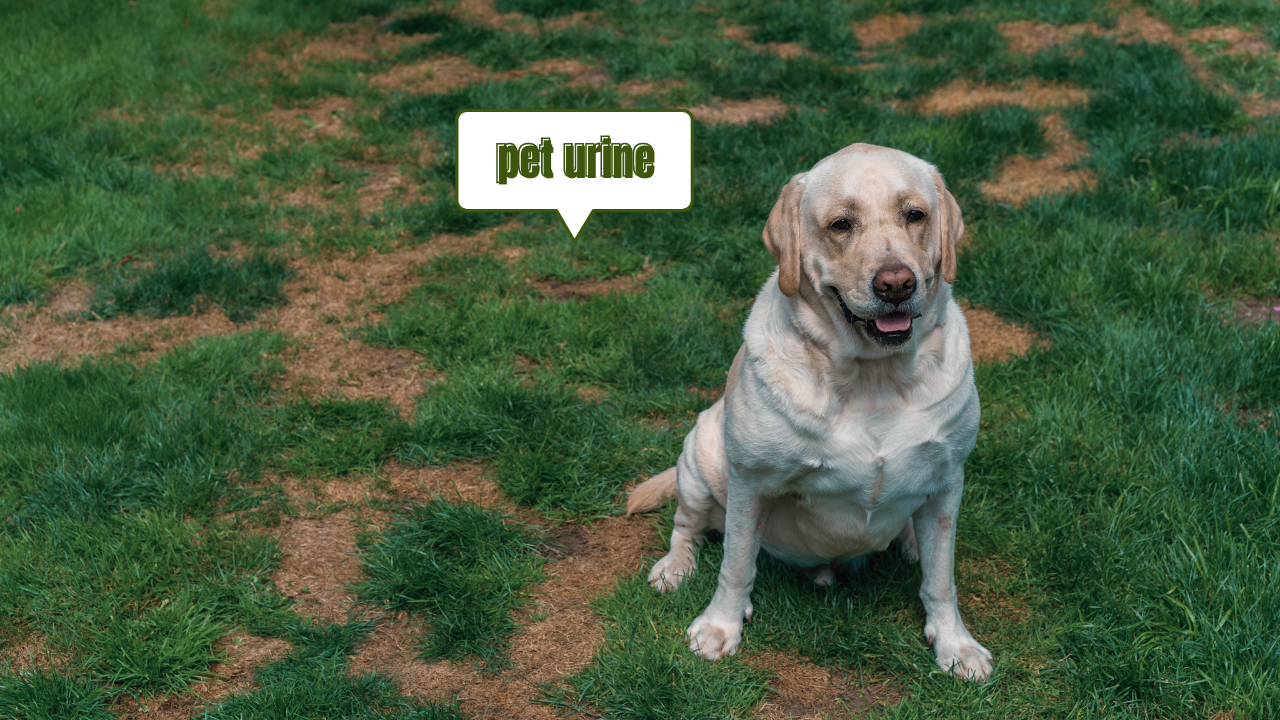Is your vibrant, lush green lawn plagued with yellow spots? There are plenty of reasons why visible yellow areas are on your grass.
Whether you are dealing with a small or an extensive yellow patch, let's discuss its reasons and some fool-proof methods for fixing them.
Dryness
Scorching weather may dehydrate the grass before you know it. The same can also happen if a specific area of your lawn is exposed to the sun the whole day long. Keep in mind that excessive heat only stresses the lawn, which then causes discoloration and damage.
To combat the damage brought by dryness, you may want to water your lawn more frequently (early in the morning). This allows the water to dry throughout the day.
Overwatering (or Not Enough Water)
Overwatering your lawn (or not giving it enough water) is another reason it turns yellow or straw-colored. Too much can drown the roots and rob oxygen from the soil, while too little may cause drought symptoms which turn the lawn yellow.
Additionally, overwatering may also lead to fungal diseases and insect infestation. It is crucial to pay close attention to the amount of watering your lawn gets. This will be easier if you have an automated irrigation system at home. Adjust your desired frequency according to local weather conditions and season.
Excess Nitrogen (Over Fertilizing and Dog Urine)
Commonly, lawns get excessive nitrogen from overfertilizing and dog urine. Enough nitrogen levels are essential to enhance the growth of green leaves, and it is highly crucial in maintaining a lush, healthy lawn.
Excess amounts of it, however, may cause chemical burns to the roots and change the soil's pH, leading to yellow grass. Using too much fertilizer (with synthetic chemicals) may turn the grass yellow instead of green. (Related: Keeping Grass Green and Achieving Healthy Lawns in Southwest Florida)
Pet urine also contains high nitrogen concentration, which may leave burn spots on the lawn. You'll find urine spots with a characteristic yellow border by green grass, as the diluted edges of urine will feed the lawn like fertilizer. The more concentrated urine spot will burn the roots and may cause discoloration.

To avoid this, you may want to keep the adage in mind– prevention is better than cure. Always fertilize your lawn cautiously to prevent leaving any damage. Constantly water the yellow patch immediately and up to a week of daily watering if you're dealing with existing damage. Opt to have your pets trained to urinate in other designated places instead of the lawn. If your pet urinates on the grass, have it watered immediately to control the damage.
Disease
Fungal diseases may also be a probable cause why your lawn has visible yellow spots. This includes fairy rings, fusarium, and snow mold. Fluctuations in the temperature, moisture levels, and thatch will only make the lawn more susceptible to fungus.
To avoid the damage brought by fungal diseases, ensure that the lawn is adequately aerated and dethatched.
Expert Tip: Opt to water your lawn in the early morning, giving ample time for the moisture to evaporate throughout the day (instead of letting it sit overnight).
Always rake away debris, clippings, and fallen leaves to avoid trapping moisture beneath.
Nutrient Deficiencies
If your lawn is currently deficient in various nutrients (such as iron and nitrogen), it may leave visible yellow lawn spots. A nitrogen-deficient lawn will have a characteristic yellow-green or yellow leaves, along with beds of clover. Meanwhile, an iron-deficient yard will often have yellow young grass blades (minus the stunted growth).
If you want an accurate assessment of your lawn's current condition, you may consider a soil test. Once you're confident about a nutrient deficiency, your lawn can be treated with specific plant food or fertilizer.
Spilled Chemicals
Accidents, such as spilling weed killers on your lawn, will most likely harm your grass. However, you may minimize the damage if you act quickly on the matter.
You can soak up any remaining liquid on the surface by using an absorbent material, including calcined clay, kitty litter, or sawdust. Then, dig out the contaminated area (6 to 10 inches) before backfilling the hole with weed-free soil.
Pest (and Grub) Infestation
Any lawn discoloration may also be brought upon by small, young insects consuming grassroots, which then causes damage. If you are sure some pests damage the lawn, you can use an insecticide formulated specifically for a particular pest.
Other methods to control pest populations on the property include irrigation, proper fertilization, and thatch reduction. Once you have identified the pests damaging your lawn, use an insecticide formulated for that pest to treat. Reducing thatch, irrigation, and proper fertilization can also help reduce pest populations.
Grub infestation, which refers to tiny worms (beetle larvae), may also severely damage your grass and turn it yellow. Although invisible to the naked eye, these worms can invisibly much away at the grassroots.
Soil Compaction
Any physical damage, such as walking too frequently on your lawn, may lead to soil compaction. This happens when the soil is too packed together that the pores become too small. Other major culprits include vehicles, construction machinery, and heavy lawnmowers.
As such, roots are restricted and unable to spread, so your grass suffers and inevitably may turn yellow whether you like it. Water and other essential nutrients will be unable to penetrate the soil well.
To aerate the soil, you may want to consider renting a core aerator. Aim for at least 12 holes per square foot of lawn. Once dry, use a rake to bust up the cores and work them back into your yard before reseeding the area.
Effective Ways to Restore Yellow Lawn Patches into their Former Green Glory
How can you get your lawn's vibrant green color back now that we've identified some of the causes of yellow spots?
Here are some more suggestions for restoring your lawn.
Contact a professional lawn care provider who may offer you a free lawn analysis and lawn care plan.

